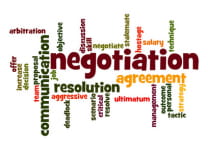Trust Building in a Trilateral China Japan Western Negotiation

This case shares the inside track from an international trilateral Chinese, Japanese and Western business negotiation.
Overview
This complex, ongoing negotiation involves three countries, each with players who have their own agenda and preferred outcome. Although at the time of writing the negotiation had yet to become hard-nosed regarding price, delivery, and technology, it shows how relationships develop over time and some of the dynamics at play in this relatively early phase.
The Scene
Our company (English owned, with regional headquarters in Hong Kong, a joint venture in Japan, and an office in Australia) has toxic waste technology that we are attempting to have accepted for a very large and politically sensitive project in China. Being negotiated is how to treat a large amount of toxic waste left in China by Japan at the end of World War II. For many years, China and Japan have been discussing who should bear the cost of treating the waste, and it was agreed only recently that Japan would clean up the waste and pay for so doing.
A project management company has been appointed in Japan to undertake the feasibility and technology selection aspects. The Japanese have long felt frustrated with what they perceive to have been a lack of cooperation by China, which has been attempting to get the Japanese government to tackle the entire problem, including many hundreds of tons of contaminated soil.
While Japan has admitted responsibility for the toxic waste—but not the polluted soil—it has long believed that China should fund all aspects of the project, including technology selection and the clean-up by Japanese companies.
The Chinese view, however, is that China should undertake the work, but that the Japanese should supply the technology and funding. Our company has been working with both parties—assisting the Japanese to find a way through the approvals maze in China (so they could start some of the work) and guiding the Chinese so that they might use our technology, which would greatly enhance our opportunities in the project.
Although we have not been privy to the negotiations at government level, we have been working at the project level as facilitators with the Japanese project management team and the Chinese regulatory authorities. Other parties involved include international experts (from government bodies) in the United Kingdom and the United States, who have been called on—because of the nature and substantial extent of the waste problem—to advise on issues such as technology selection and project requirements. The three main issues are:
- Japan wants to limit the extent of the clean-up to an absolute minimum— which will cost, even so, hundreds of millions of dollars; China, meanwhile, wants to derive as much benefit as possible.
- Japan believes that, as it will be funding the clean-up, it has the right to choose who is to do the work and how, and would prefer to use Japanese companies and technology; China wants Chinese companies to do the work, using technology chosen, provided, and funded by the Japanese. Although China has the final say—because work cannot proceed until it gives the nod—Beijing cannot but depend on Japan for the technology and funds.
- We want our company’s technology to be accepted for the major portion of the work. But for this to happen, we need acceptance by both the Chinese and Japanese players, so we plan to make maximum use of our joint-venture company in Japan.
Negotiations to Date
In the role of middleman, we have been working with one of the newer breeds of Chinese companies, a partially privatized government department. Large (20,000 employees) and still heavily responsible to the central government, it has unashamedly sought assistance and guidance from foreign companies, ostensibly to better understand the outside business world to better formulate their negotiation strategy. The Chinese general manager with whom we worked is, at the age of 43, by Chinese standards a mere slip of a lad and considered exceedingly young to hold such a position.
We introduced the Chinese company to the Japanese (in Japan) and offered to assist the Japanese project managers to work through the authorisations labyrinth in China to facilitate and simplify their initial investigations and infrastructure development. To this end, we negotiated a memorandum of understanding (MOU) with the Chinese company to work together on the project and in order to promote our technology in China.
It was difficult to convince the Chinese of the value of our strategy, namely, that they should assist the Japanese company through the approvals phase in order to put themselves in a position of strength that would enable them to assist with the work. The Japanese, meanwhile, chose to believe that the Chinese would require the majority of the work to be undertaken by Chinese companies or personnel.
We recognised the need for us to build personal trust and a very strong relationship with the Chinese involved if the proposed arrangement was to be approved. The Chinese would have to trust our approach.
This took a long time, but we persevered, and they came to trust us and eventually accepted our proposal. But that was only after we convinced them that there was something in it for them in the long run.
Separately, our Japanese joint-venture company worked with the relevant Japanese government department on the technology issues. This move was designed to promote and allow acceptance of our technology as satisfactory for the treatment phase. We also brought some Chinese into those discussions to assist the Japanese project management company. The Chinese were pleased that we had given them face with both the Japanese government and the Japanese project management company.
Negotiations between the Japanese and the Chinese company we brought to the table have progressed, and the Chinese have started to undertake a number of pilot studies to help the Japanese gain approvals and to smooth the way for the project.
In order to further strengthen our position regarding the project, we continue to seek approval for our technology in China, realizing that the final say will undoubtedly rest with the Chinese. We have persuaded the Chinese company to arrange trials in China, using our technology for waste of a similar nature to that of the project, so that we might become an accepted technology in China, satisfying the requirements of the Japanese (through our Japanese joint venture) and the Chinese (by getting Chinese approval and having a Chinese partner to undertake the work).
The approval-related negotiations have been the most comprehensive to date, as is outlined in the next section.
The Devil is in the Details
Negotiations started twelve months ago, with a presentation of our technology to a gathering in Beijing of fifty people, including government officials, university professors, and department heads, as well as other experts. I presented the technology issues and outcomes to this group through a non-technical interpreter. This was a mistake.
The interpretation was quite often incorrect, the interpreter substituting the closest expression he knew for what I was saying. Fortunately, several technically astute people in the audience spoke very good English and were able to correct the official negotiation interpreter. It was a lesson I shall not forget!
Following the presentation, we answered the numerous questions that were posed, but otherwise the feedback was rather limited. It took a great deal of perseverance to keep the issue in the limelight and push for a pilot study to be conducted in China.
After almost twelve months to the day, we managed to arrange for a party of five Chinese, from different institutions, to travel to Australia to witness trials and further familiarize themselves with our company and its technology. Two members of the party were from a government department, two were from the host Chinese company, and one was from the province where the waste-related trials were to be undertaken.
Three members of our staff accompanied them: two from Beijing, one from Hong Kong, and me. The host Chinese company covered the airfares for the five Chinese, while we covered all other expenses. This allowed us to gain favor in the friendship stakes; we believe they will feel obliged to return the favor—we hope by arranging the trials and approval process for our technology.
The visit to Australia was really a relationship-building phase, designed to give the Chinese an overview of the technology, show them Australian hospitality, and build the all-important relationship of trust.
A lot of time was spent explaining the technology and answering questions, which were often asked in different ways by different people. To do so is typical of the Chinese when in information-gathering mode; they make sure that one is able to reply in the same way each time.
After we had already been working on the project for a year, we were asked what outcome we wanted from trials and why we wanted them carried out. The questions threw us. We had been under the impression that they all understood our hope to have our technology approved for future projects in both China and Japan.
But this was not so. Here we thus were, at this late stage having to explain the outcome that we were after. Fortunately, our Chinese marketing man from Hong Kong saved the day when he explained to the five Chinese with flair and negotiation skill that “We want to go to bed together and have many children!” They laughed heartily and the tension dissipated.
The whiteboard has become a very important tool in our discussions and negotiations with the Chinese. One picture is indeed worth a thousand words — and many more if you do not speak the language! It has enabled us to discuss many issues and clarify communications and misunderstandings. Moreover, having a Chinese manager from our company involved has also made a huge difference. Many times we would seem to have reached an impasse or a misunderstanding, only to have our Chinese colleague clarify the matter, allowing us to move forward.
Discussion and negotiations concerning the trials, as well as the transfer of information and understanding of the technology, have gone well. It was interesting to find that several Chinese who, unable to communicate with me during the first few days, were speaking with me in quite fluent English by the last few days of the ten-day visit. Initially, I had wondered if I had done something to offend them.
Lessons So Far
- Avoid heavy lunches! A majority of participants fall asleep at the discussion table after lunch.
- In China, rank automatically makes people eligible for a trip overseas, regardless of whether the individual needs to be involved, has the relevant influence, or can contribute. Thus, to get the best value for money, time and effort should be invested in vetting the nominees for study tours. It is best to eliminate those who have little or no influence on major outcomes.
- A general nodding of heads does not mean one has been understood. One should repeat statements, draw pictures, and ask again, to ensure issues (especially if important) are well understood.
- The majority of the time that Chinese team negotiators are with one should be devoted to them. It may be taxing to spend every night at dinner with them and accompany them all day every day, yet that is what they expect and it helps build negotiation trust and develop relationships. Moreover, relaxation after a few drinks can facilitate understanding all round.
- Avoid selecting expensive accommodations for your Chinese guests if they are to foot the bill. Since they may prefer more modest lodgings and the option of spending their allowances otherwise, one should ask before making bookings.
Case Summary
The pre-negotiation negotiation phase, during which the teams were selected on both sides, is past. The next phase, involving meetings and opening moves in China, Japan, and Australia, has just begun. While different China-based players are at the Japan end of the negotiations, two of the China-based technical personnel have been on both Japanese and Australian visits.
The negotiating phase concerning the trials and technology approvals is advancing, and there are plans for further meetings in China involving the Japanese and Chinese parties, as well as our companies and UK experts.
This complex set of negotiations has required planning and strategy not only trilaterally, but also bilaterally between the Chinese and the Japanese negotiation teams. The dynamics of the situation are complex and this is still the early stage of what promises to be protracted negotiations.
We expect the trials and approvals process to become harder; the Japanese are still in the initial phase of shadow boxing to gain position, intelligence, and understanding vis-à-vis other interested parties, and continue to consider their options. Nothing is happening very quickly.
Commentary
From the outset, Osborne’s team understands the complex nature of the negotiations. It is spending a great deal of time laying a solid foundation based in trust, goodwill, and familiarity so that his company may achieve its goals and both outside parties attain their objectives. The team’s patience is exemplary, as is its attention to detail, communication, and the concerns of all parties involved.
At this point, there is no place for a bottom-line approach — building friendly personal relations and sharing knowledge are crucial, if the final outcome is to be favourable for Osborne. He recognises that bringing both sides closer together and striving for a win-win outcome for them will ultimately benefit the matchmaker.
This negotiation case is published with permission from Dr Bob March’s excellent book “Chinese Negotiator”.
YOU MAY ALSO LIKE




